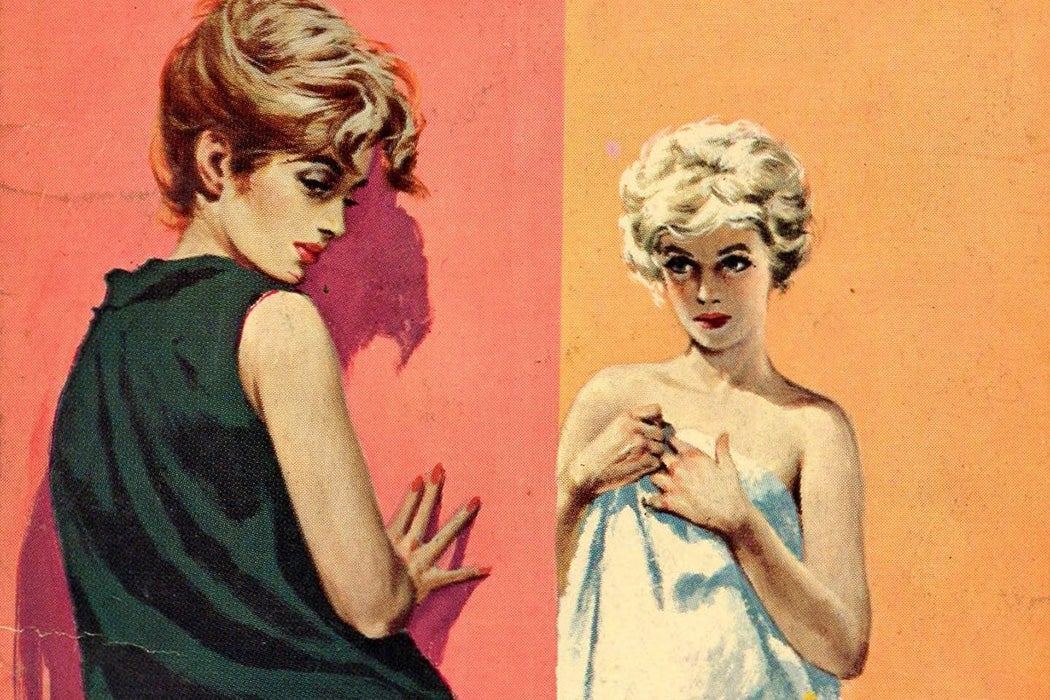In the United States in the 1950s or early 1960s, readers browsing in drugstores, booksellers, or bus terminals were likely to see racks filled with books with cheap, sensational covers that hinted at lesbian content within. “Her choice: Normal marriage or lesbian love?” asked one cover. “In love with a woman,” asked another, “must society reject me?”
Society did reject lesbians. The era was one of blatant homophobia and the overwhelming silence of societally-enforced closets. But for many women, the cheap pulp novels that some dismissed as salacious entertainment were an eye-opening lifeline. Scholar Yvonne Keller tells the tale of how content packaged to titillate men actually gave lesbian women much-needed representation.
Academics shouldn’t ignore lesbian pulp fiction because it was marketed toward straight men, Keller argues. Though they “engendered profoundly mixed feelings,” she writes, the books offered some of their era’s only representations—and celebrations—of lesbian lives. For many women grappling with sexualities that were regarded as unhealthy and even criminal, writes Keller, these “dismissed, yet foundational” narratives offered “a readily available, popular discourse that put the word lesbian in mass circulation as never before.”
Between 1950 and 1965, more than five hundred lesbian pulps were published in the U.S. Cheaply manufactured and sold en masse, they came with salacious covers and dramatic titles like Spring Fire, Odd Girl Out, and Twilight Girl. After the publication of Women’s Barracks, an autobiographical novel by Tereska Torres that has sold an astonishing four million copies in the U.S. alone, the genre took off. Some stories masqueraded as journalistic looks into “deviant” lives. Others centered men and featured lots of sex. But many were authored by women, and offered stories of realistic and even happy lesbian relationships.
Weekly Newsletter
Scandalous cover art and text that focused on “savage” or “strange” loves all but shouted the lesbian content that could be found within. Keller notes:
Since the pulps were typically not bought by libraries, the covers were crucial markers of lesbianism—the closest thing to a Dewey decimal system for dykes—or generations of lesbian and incipient lesbian readers.
In a world that hid homosexuality from view, lesbian pulps were surprisingly pervasive, and popular. Many of the books, and nearly all of their covers, reinforced homophobic stereotypes of lesbianism. But for women in search of more information about lesbianism, they were lifelines. The culture suppressed lesbianism, Keller argues, but ironically, this suppression inflamed things, forcing lesbian representation into forbidden-fruit pulp.
Lesbianism may have been taboo, but the pulps profited from proscriptions against same-sex relationships until the genre died out around 1965. Keller argues that the everywhere-but-nowhere dichotomy represented by lesbian pulps helped set the stage for future LGBTQ activism, the women’s movement, and the cultural shifts of the late 1960s. They may have been seamy, but books about lesbian sexuality were anything but disposable.







